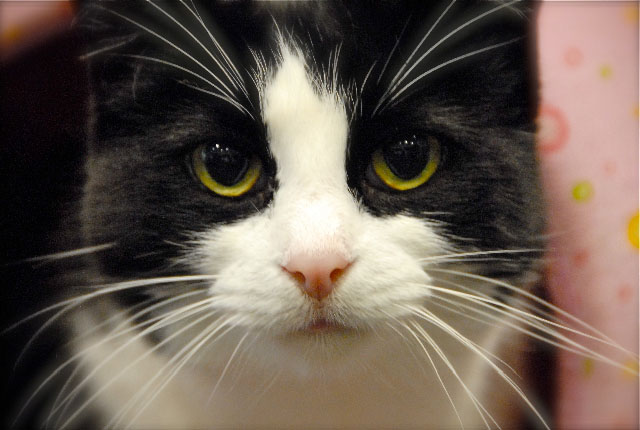How and When to Care for and Socialize Feral Kittens
When you come across outdoor kittens, you may feel the need to immediately pick them up and bring them home with you, but that might not be the best thing for the kittens–or for you. Here are some guidelines on how to decide if kittens in a colony should be removed and socialized for adoption, and how to care for them should you choose to remove them and raise or socialize them yourself. You can find more in-depth information by ordering kitten care products from our online marketplace. These guidelines are just that, and they should not be used as a substitute for veterinary care.
In addition to the information below, consider looking into Feral Friends in your area. These are local individuals, organizations, and veterinarians or clinics that may be able to help with hands-on advice, information about borrowing equipment, and veterinarians or clinics that can spay and neuter feral cats. Request a list of Feral Friends in your area.
1. First Steps When You Find Kittens Outdoors
You've got a decision to make. Your first instinct when you see kittens may be to swoop them up and take them home with you, but that is not always in the best interest of the kittens—or you. Socializing and caring for feral kittens is a time-consuming process which requires devotion, patience, and attention. The decision to bring feral kittens into your home should not be taken lightly.
Some kittens may need intervention if they are not doing well. Remember that early weaning of kittens who seem to be doing well may lead to increased mortality or failure to thrive. Although kittens begin weaning prior to eight weeks of age, if it's safe they should remain with their mother until then to learn proper behavior and socialization.
Ultimately, you have to use your own judgment depending on the kitten's circumstances and your time and resources. The best way to help all of the cats in the colony is to perform Trap-Neuter-Return and not spend all your time socializing kittens. Read our How to Conduct Trap-Neuter-Return guide for help.
Before you move forward, consider:
- Time: Do you have the time it takes to socialize kittens? You will have to commit to caring for them one-on-one for at least a couple of hours each day, for a period of a few weeks to a month or longer. If the kittens are neonatal, they will require even more specialized care, including round-the clock bottle-feeding. Make sure you know ahead of time what this entails. Sadly, people often bring feral kittens into their home and then do not take the time to work with them. Weeks, or months, later, they realize that they cannot touch the cat—they have feral cats in their home that cannot be adopted.
- Adoption Expertise and Connections: After socializing the kittens, they will need adoptive homes. Do you have the network—friends, acquaintances, organizations—to help you find those homes? Finding and screening homes for kittens takes work. Consider the paperwork required—adoption fees, forms, and contracts—as well as your ability to get the kittens neutered before adoption when deciding whether to socialize them or not.
*Note: Alley Cat Allies recommends early-age spay/neuter. A kitten can be neutered as long as it weighs two pounds. Learn more.
- Kitten Age: Healthy kittens four months of age or older can stay in their colony, and Alley Cat Allies does not recommend attempting to socialize kittens older than this. These kittens should be neutered, vaccinated, and returned to their outdoor home.
- How to Determine Kitten Age
See photos of kitten progression week-by-week »
See photos of kitten progression at-a-glance »
- Under one week: (3-8 oz) Eyes are shut, ears are folded down, and kittens are unable to walk. They can purr and make tiny noises. The umbilical cord may still be visible.
- One-two weeks: (8-11 oz) Eyes start to open (they are blue) and focus. Ears begin to open and movement is improved to crawling, snuggling, and kneading.
- Three weeks: (7.5-14.5 oz) Eyes fully open and ears are open and standing up. The kitten will start to respond to noises and movement. The first wobbly steps are taken and baby teeth start to come in.
- Four-five weeks: (8-16.75 oz) Running, playing, digging, and pouncing occur often. Kittens will start to wean and will be able to lap up formula, eat soft food, and use the litter box by themselves. Eyes have fully changed from blue to their adult color.
- Eight weeks: (2 lbs) Kittens look like little versions of full grown cats.
Article Reprinted from Alley Cat Allies©
|
 PETUNIA SAYS
PETUNIA SAYS

 About Us
About Us Adoptions
Adoptions Lost & Found
Lost & Found Short On Luck
Short On Luck
 Bunnies, Etc.
Bunnies, Etc. New Beginnings
New Beginnings Petunia Says...
Petunia Says...


